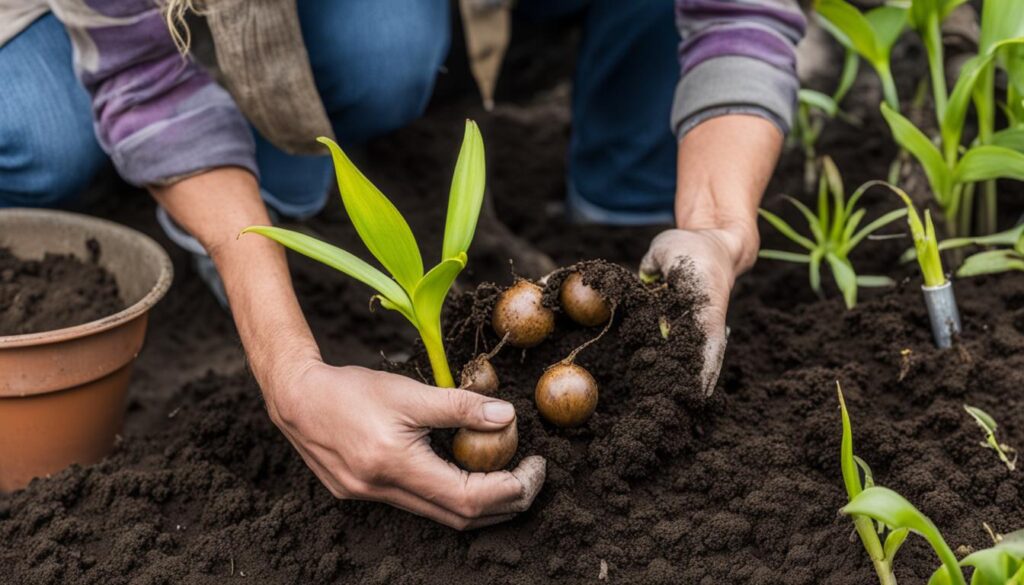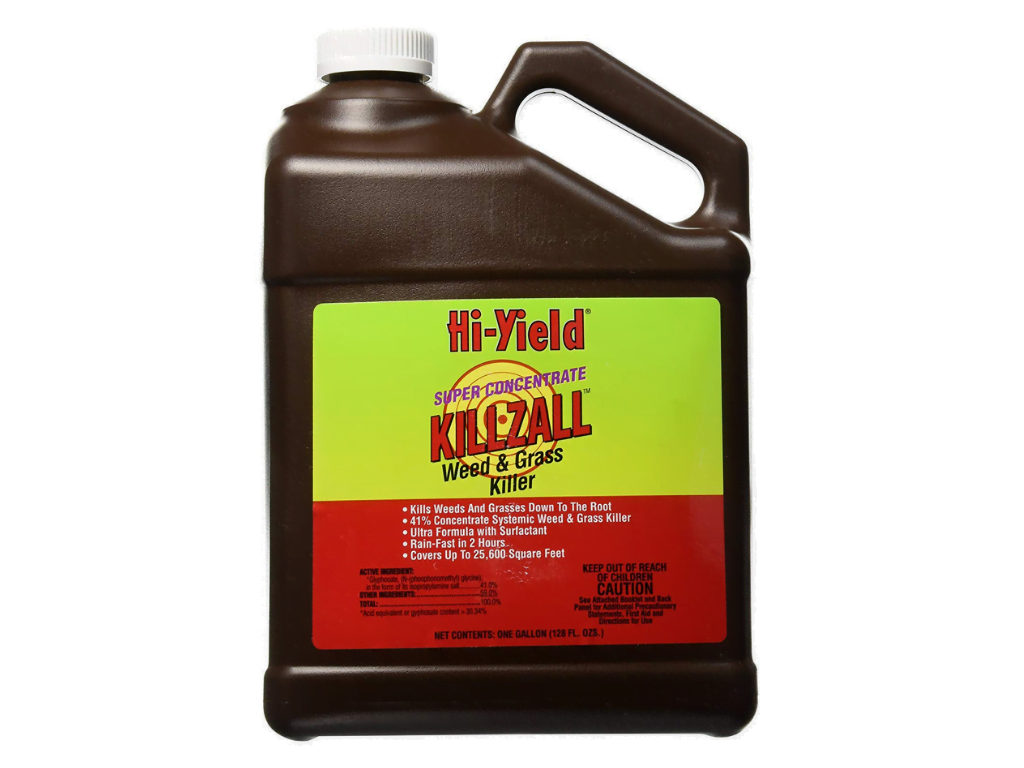Transplanting lilies is a key task for maintaining their health and ensuring a successful relocation. To help you achieve optimal results, it’s crucial to know the best time to transplant these cherished flowers. By following the proper timing, you can set your lilies up for continued growth and abundance.
How to Transplant Lilies
Transplanting lilies is a straightforward process that can be done in the fall. Follow these steps for successful lily division and transplantation:
- Cut the stems: Start by cutting the stems of the lilies to about 5 or 6 inches above the ground. This allows for easier handling during the transplanting process.
- Dig carefully: Next, dig around the patch of lilies, ensuring that you go several inches deep to retrieve the bulbs without damaging them. Take care to work around the bulbs and gently lift them from the soil.
- Separate bulbs and bulblets: Once the bulbs are out of the ground, it’s time to separate them. Gently separate each bulb and its accompanying bulblets, which are smaller versions of the bulb. This division process helps promote healthier growth and prevents overcrowding.
- Trim the stem: Cut the stem just above the lily bulb. This will help redirect the plant’s energy and encourage strong root development in its new location.
- Work quickly: It’s important to work quickly during the transplanting process to avoid drying out the bulbs. Keep the bulbs in a cool, shaded area until you are ready to replant them.
- Choose the right time: It’s best to transplant lilies in the morning when temperatures are cooler and there is some moisture in the soil and air. This reduces stress on the plants and helps them establish themselves in their new location more effectively.
- Plant at the right depth: Plant the larger bulbs under 5 to 6 inches of soil, ensuring they are well-covered. The baby bulblets should be planted under a few inches of soil. This depth helps protect the bulbs and encourages healthy growth.
- Insulate with organic material: Apply organic material, such as compost or aged manure, over the planting zone. This acts as a natural insulator, protecting the bulbs from extreme temperatures during the winter months.
- Create an attractive display: To create an eye-catching display, plant lily bulbs in clumps of 3 or more. Space the bulbs 8 to 12 inches apart to allow for adequate growth and airflow.
- Remove mulch in spring: Once spring arrives and new shoots start to emerge, remove any mulch material from the planting area to allow the lilies to receive sunlight and air.
Transplanting lilies may seem intimidating, but by following these steps, you can ensure that your lilies thrive in their new location. To visualize the process, refer to the image below:
Now that you know how to transplant lilies, you can enjoy the beauty of these magnificent flowers in different areas of your garden.
Conclusion
Transplanting lilies in the fall is essential for maintaining the health and vitality of these beautiful flowers. By dividing the bulbs every 2 to 3 years, you can ensure that your lilies continue to produce vigorous blooms season after season. Late September or early October is the optimal time to transplant lilies, but it’s also crucial to consider the local climate and the date of the first frost.
When transplanting lilies, remember to cut the stems, dig up the bulbs, and separate them for replanting. Take proper care to prevent the bulbs from drying out during the process. To create an attractive display, plant lily bulbs in clumps and space them 8 to 12 inches apart. Provide the necessary soil and organic material to help them thrive.
Follow these tips for successful lily division and transplantation, and you’ll be rewarded with a flourishing garden filled with stunning lily blooms. With the right techniques and timing, you can enjoy the beauty and fragrance of lilies year after year. Happy gardening!
Are Daylilies and Lilies Transplanted and Cut Back at the Same Time?
Yes, daylilies and lilies are transplanted and cut back at the same time. It is best to transplant and cut back daylilies in the early spring or late summer. When to prune daylilies is important for their health and blooming.










